#Data annotation Standards
Explore tagged Tumblr posts
Text
The Ethics Of Data Annotation: Addressing Bias And Fairness
In the era of artificial intelligence and machine learning, data annotation plays a crucial role in shaping the performance and fairness of AI models. However, the ethical implications of data annotation must be considered. Ensuring ethical data annotation, addressing data annotation bias, and promoting fairness in data labeling is essential for creating unbiased and fair AI systems.

In this blog, we will explore the importance of ethical data annotation, strategies for reducing bias in AI, and the role of data annotation companies in India, like EnFuse Solutions, in setting high standards for fairness and accuracy.
Understanding Data Annotation And Its Ethical Implications
Data annotation involves labeling data to train AI models, enabling them to recognize patterns and make decisions. The quality and fairness of these annotations directly impact the performance and ethicality of AI systems. Ethical data annotation practices are vital to prevent the propagation of biases that can lead to discriminatory outcomes in AI applications.
Identifying And Addressing Data Annotation Bias
Data annotation bias occurs when the labels applied to training data reflect the prejudices of the annotators or the dataset itself. This bias can manifest in various forms, such as gender, racial, or cultural biases, and can lead to unfair AI predictions and decisions. To mitigate data annotation bias, it is essential to:
1. Diversify Annotator Teams: Ensuring that annotator teams are diverse can help bring multiple perspectives and reduce the risk of biased annotations. A diverse team can better understand and address cultural and social nuances.
2. Implement Annotator Training: Providing comprehensive training for annotators on recognizing and avoiding biases is crucial. This training should include guidelines on ethical data annotation practices and the importance of fairness in data labeling.
3. Use Bias Detection Tools: Employing tools that can detect and flag potential biases in annotated data can help maintain the quality and fairness of the dataset. Regular audits of the annotated data can identify and rectify biases.
Promoting Fairness In Data Labeling
Fairness in data labeling ensures that AI models do not favor or discriminate against any particular group. This can be achieved by:
1. Establishing Clear Annotation Standards: Developing and adhering to standardized annotation guidelines can help ensure consistency and fairness in data labeling. These standards should emphasize the importance of neutrality and objectivity.
2. Conducting Regular Reviews: Regular reviews and quality checks of the annotated data can help maintain high ethical standards. Involving external reviewers can provide an unbiased assessment of the annotations.
3. Ensuring Transparency: Maintaining transparency in the data annotation allows for accountability and trust. Documenting the annotation guidelines, procedures, and decision-making processes can help build confidence in the fairness of the labeled data.
The Role Of Data Annotation Companies In India
Data annotation companies in India, such as EnFuse Solutions, are at the forefront of promoting ethical AI practices. These companies are committed to delivering high-quality, unbiased, and fair data annotations that adhere to stringent ethical standards. EnFuse Solutions, for instance, emphasizes the importance of ethical AI training data and employs robust strategies to prevent annotator bias.
Conclusion
The ethics of data annotation are paramount in creating fair and unbiased AI systems. Addressing data annotation bias, promoting fairness in data labeling, and implementing ethical AI practices are essential steps in this direction. By adhering to high ethical standards, data annotation companies in India, like EnFuse Solutions, are setting a benchmark for fairness and accuracy in AI training data.
As we continue to advance in the field of AI, ensuring ethical data annotation will be crucial in building AI systems that are not only intelligent but also just and equitable.
#Data Annotation#Ethical Data Annotation#Data Annotation Bias#Fairness In Data Labeling#Reducing Bias In AI#Ethical AI Practices#Bias In Machine Learning#Annotator Bias Prevention#Ethical AI Training Data#Data annotation Standards#Data Annotation Companies in India#EnFuse Solutions
0 notes
Text
📊 LANDOSCAR AO3 STATS (may 2025)

notes
sorry this literally took 2 weeks to write... unfortunately the data was retrieved april 28 and it is now may 12.
other work: i previously wrote a stats overview that covered landoscar's fic growth and breakout in 2023 :) i've kept some of the formatting and graphs that i showed there, while other things have been removed or refined because i felt they'd become redundant or unnecessary (aka they were basically just a reflection of fandom growth in general, and not unique or interesting to landoscar as a ship specifically).
methodology: i simply scraped the metadata for every fic in the landoscar tag (until april 28, 2025) and then imported it into google sheets to clean, with most visualizations done in tableau. again, all temporal data is by date updated (not posted) unless noted otherwise. this is because the date that appears on the parent view of the ao3 archives is the updated one, so it's the only feasible datapoint to collect for 3000+ fics.
content: this post does not mention any individual authors or concern itself with kudos, hits, comments, etc. i purely describe archive growth and overall analysis of metadata like word count and tagging metrics.
cleaning: after importing my data, i standardized ship spelling, removed extra "814" or "landoscar" tags, and merged all versions of one-sided, background, implied, past, mentioned etc. into a single "(side)" modifier. i also removed one fic entirely from the dataset because the "loscar" tag was being mistakenly wrangled as landoscar, but otherwise was not actually tagged as landoscar. i also removed extra commentary tags in the ships sets that did not pertain to any ships.
overall stats
before we get into any detailed distributions, let's first look at an overview of the archive as of 2025! in their 2-and-change years as teammates, landoscar have had over 3,409 fics written for them, good enough for 3rd overall in the f1 archives (behind lestappen and maxiel).
most landoscar fics are completed one-shots (although note that a one-shot could easily be 80k words—in fact they have about 30 single-chapter fics that are at least 50k words long), and they also benefit from a lot of first-tagged fic, which is to say 82.3% of landoscar-tagged fics have them as the first ship, implying that they aren't often used as a fleeting side pairing and artificially skewing perception of their popularity. in fact, over half of landoscar fics are PURELY tagged as landoscar (aka otp: true), with no other side pairings tagged at all.

this percentage has actually gone down a bit since 2023 (65.5%), which makes sense since more lando and oscar ships have become established and grown in popularity over the years, but it's also not a very big difference yet...
ship growth
of course, landoscar have grown at a frankly terrifying rate since 2023. remember this annotated graph i posted comparing their growth during the 2023 season to that of carlando and loscar, respectively their other biggest ship at the time? THIS IS HER NOW:

yes... that tiny squished down little rectangle... (wipes away stray tear) they grow up so fast. i also tried to annotate this graph to show other "big" landoscar moments in the timeline since, but i honestly struggled with this because they've just grown SO exponentially and consistently that i don't even feel like i can point to anything as a proper catalyst of production anymore. that is to say, i think landoscar are popular enough now that they have a large amount of dedicated fans/writers who will continuously work on certain drafts and stories regardless of what happens irl, so it's hard to point at certain events as inspiring a meaningful amount of work.
note also that this is all going by date updated, so it's not a true reflection of ~growth~ as a ficdom. thankfully ao3 does have a date_created filter that you can manually enter into the search, but because of this limitation i can't create graphs with the granularity and complexity that scraping an entire archive allows me. nevertheless, i picked a few big ships that landoscar have overtaken over the last 2 years and created this graph using actual date created metrics!!!

this is pretty self-explanatory of course but i think it's fun to look at... :) it's especially satisfying to see how many ships they casually crossed over before the end of 2024.
distributions
some quick graphs this time. rating distribution remains extremely similar to the 2023 graph, with explicit fic coming out on top at 28%:

last time i noted a skew in ratings between the overall f1 rpf tag and the landoscar tag (i.e. landoscar had a higher prevalence of e fic), but looking at it a second time i honestly believe this is more of a cultural shift in (f1? sports rpf? who knows) fandom at large and not specific to landoscar as a ship — filtering the f1 rpf tag to works updated from 2023 onward shows that explicit has since become the most popular rating in general, even when excluding landoscar-tagged fics. is it because fandom is getting more horny in general, or because the etiquette surrounding what constitutes t / m / e has changed, or because people are less afraid to post e fic publicly and no longer quarantine it to locked livejournal posts? or something else altogether? Well i don't know and this is a landoscar stats post so it doesn't matter but that could be something for another thought experiment. regardless because of that i feel like further graphs aren't really necessary 🤷♀️
onto word distribution:

still similar to last time, although i will note that there's a higher representation of longfic now!!! it might not seem like much, but i noted last year that 85% of landoscar fics were under 10k & 97% under 25k — these numbers are now 78% and 92% respectively, which adds up in the grand scheme of a much larger archive. you'll also notice that the prevalence of <1k fic has gone down as well.

for the fun of it here's the wc distribution but with a further rating breakdown; as previously discussed you're more likely to get G ratings in flashfic because there's less wordspace to Make The Porn Happen. of course there are nuances to this but that's just a broad overview
side ships
what other ships are landoscar shippers shipping these days??? a lot of these ships are familiar from last time, but there are two new entries in ham/ros and pia/sai overtaking nor/ric and gas/lec to enter the top 10. ships that include at least one of lando or oscar are highlighted in orange:

of course, i pulled other 814-adjacent ships, but unfortunately i've realized that a lot of them simply aren't that popular/prevalent (context: within the 814 tag specifically) so they didn't make the top 10... because of that, here's a graph with only ships that include lando or oscar and have a minimum of 10 works within the landoscar tag:

eta: other primarily includes oscar & lily and maxf & lando. lando doesn't really have that many popular pairings within landoscar shippers otherwise...
i had wanted to explore these ships further and look at their growth/do some more in depth breakdowns of their popularity, but atm they're simply not popular enough for me to really do anything here. maybe next year?!
that being said, i did make a table comparing the prevalence of side ships within the 814 tag to the global f1 archives, so as to contextualize the popularity of each ship (see 2023). as usually, maxiel is very underrepresented in the landoscar tag, with galex actually receiving quite a boost compared to before!

additional tags
so last time i only had about 400 fics to work with and i did some analysis on additional tags / essentially au tagging. however, the problem is that there are now 3000 fics in my set, and the limitations of web scraping means that i'm not privy to the tag wrangling that happens in Da Backend of ao3. basically i'm being given all the raw versions of these au tags, whereas on ao3 "a/b/o" and "alpha/beta/omega dynamics" and "au - alpha/beta/omega" and "alternate universe - a/b/o" are all being wrangled together. because it would take way too long for me to do all of this manually and i frankly just don't want to clean that many fics after already going through all the ship tags, i've decided to not do any au analysis because i don't think it would be an accurate reflection of the data...
that being said, i had one new little experiment! as landoscar get more and more competitive, i wanted to chart how ~angsty~ they've gotten as a ship on ao3. i wanted to make a cumulative graph that shows how the overall fluff % - angst % difference has shifted over time, but ummmm... tableau and i had a disagreement. so instead here is a graph of the MoM change in angst % (so basically what percentage of the fics updated in that month specifically were tagged angst?):

the overall number is still not very drastic at all and fluff still prevails over angst in the landoscar archive. to be clear, there are 33.2% fics tagged some variation of fluff and 21.4% fics tagged some variation of angst overall, so there's a fluff surplus of 11.8%. but there has definitely been a slight growth in angst metrics over the past few months!
—
i will leave this here for now... if there's anything specific that you're interested in lmk and i can whip it up!!! hehe ty for reading 🧡
#adflkahsdflakhsdlfkahdf i wrote all of this and then lost 80% of my draft. so i had to write it all again#sorry this is a lot shorter than last time too T__T i honestly just felt like a lot of the old graphs were irrelevant#hopefully some of the information is still interesting though even if it's not particularly surprising!!#landoscar#*s
267 notes
·
View notes
Text
I've noted before that the taxonomy followed on this blog cleaves to my own opinions and is not beholden to any single authoritative source, but the Society For Marine Mammalogy is my standard reference point for the taxonomy of those most wonderful of even-toed ungulates, the cetaceans.
Now, though, I am breaking from their taxonomy by following the 2025 results from Galatius and colleagues on the generic arrangement of the six dolphins traditionally grouped together in the genus Lagenorhynchus, familiarly called "lags". It has been increasingly appreciated since the late 1990s, as the Society For Marine Mammal notes in its taxonomic annotations, that Lagenorhynchus as traditionally defined is polyphyletic; that is, the species included there are actually distantly related and do not form a group with each other to the exclusion of other dolphin species.
While taxonomic revisions for this genus have been proposed before, the Society For Marine Mammalogy did not vote to integrate these into its formal taxonomy due to some lingering uncertainties, particularly regarding the relationship between the Peale's dolphin "Lagenorhynchus" australis, hourglass dolphin "Lagenorhynchus" cruciger, and the small blunt-snouted dolphins Cephalorhynchus spp. I feel that the conclusions reached by Galatius and colleagues (2025), which align with earlier findings as reported therein, are robust enough to alleviate these uncertainties, resting on multiple lines of genomic evidence as well as morphological and acoustic data.
The arrangement of the lags that will be used in this blog is listed below:
Atlantic white-sided dolphin Leucopleurus acutus: Though it has been recovered as the sister species to the white-beaked dolphin (see below), recent phylogenies find this to be the basalmost of the living delphinids, and it is distinguishable morphologically and acoustically.
White-beaked dolphin Lagenorhynchus albirostris: This is the genotypical species for Lagenorhynchus and thus remains unchanged.
Dusky dolphin Aethalodelphis obscurus: This and the following species are clearly very similar, and are united together in this new genus, meaning "sooty dolphin", coined by Galatius and colleagues (2025).
Pacific white-sided dolphin Aethalodelphis obliquidens: The second species transferred to the new genus.
Peale's dolphin Cephalorhynchus australis: The alternative taxonomic scheme championed by Vollmer and colleauges (2019) - and the one recently adopted by iNaturalist for its taxonomy - is to unite this species, the previous two, and the following one in the genus Sagmatias. Peale's dolphin is the type species for Sagmatias. The recent study recovers this and the hourglass dolphin (see below) as sister species, with the sister to this pair being the Haviside's dolphin Cephalorhynchus heavisidii. Rather than splitting up Cephalorhynchus, the preference seems to be adding these dolphins to it.
Hourglass dolphin Cephalorhynchus cruciger: Poorly-known, but established as a close relative of Peale's dolphin; it has now moved with it to Cephalorhynchus.
For what it's worth, I would not be surprised if the Society For Marine Mammalogy adopts this or a similar taxonomy in the near future. While there's always room for surprises with more research (a reduced Sagmatias of the Peale's and hourglass [and possibly Haviside's?] dolphins divided from Cephalorhynchus seems plausible), I am comfortable employing this new arrangement here. It's worth remembering that taxonomic reshuffling isn't a bug, it's a feature - the acquisition of new data, improved and more thorough analyses, and rearrangement of how animals are classified are all in service of a better understanding of these animals' evolutionary histories.
Ref.:
Galatius, A, CC Kinze, MT Olsen, J Tougaard, D Gotzek, MR McGowen. 2025. Phylogenomic, morphological and acoustic data support a revised taxonomy of the lissodelphine dolphin subfamily. Molecular Phylogenetics and Evolution 205:108299.
Vollmer, NL, E Ashe, RL Brownell Jr., F Cipriano, JG Mead, RR Reeves, MS Soldevilla, R Williams. 2019. Revision of the dolphin genus Lagenorhynchus. Marine Mammal Science 35(3):957-1057.
and references therein
39 notes
·
View notes
Note
what are the best resources for learning more about medb
Good question!
I would generally recommend reading a bunch of stories about her first, and then (if you can access them) looking at some scholarly articles about her. Possibly the most important article I think has been written on Medb is: Sheehan (Sarah), 'Loving Medb,' in Gablánach in scélaigecht: Celtic studies in honour of Ann Dooley (2013): 171–186. This article gives a great overview of previous scholarship and does a good job questioning a lot of the assumptions that have been in play.
For stories about Medb, well! If there was a big website database that contained an annotated list of every single story in the Ulster Cycle and a list of which characters appear in them, as well as the inverse (a list of every text a character appears in), that would sure make this easy, right?! If someone maybe had all that data on hand and just needed funding to host it and have a website.
It'd be crazy if someone had all that.
And just needed funding.
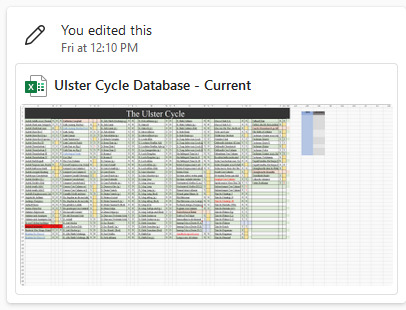
Anyways, if you want a list of recommended stories, I'd check out the following:
Táin Bó Cúailnge (Recension 1; Recension 2).
Táin Bó Fráech: Medb is awful to her daughter mk. 1 (mk. 2 is the Táin).
Tochmarc Ferb: Medb is inexplicably Hector?
Fled Bricrenn: Medb is here (briefly) doing funky stuff.
Mesca Ulad: Medb is here doing other funky stuff.
Ferchuitred Medba: Medb is here, this is why she's queen of Connacht, this is why her sons all have the same name, and tbh, she grooms Ailill and its pretty messed up.
Aided Ailella 7 Chonaill Chernaig: Medb reveals her brutal double standards and has Ailill murdered.
Further, if you have any more specific questions that pop up in relation to these stories, you can just ask me and I can answer them.
#mythology#irish mythology#celtic#celtic mythology#celtic myth#queen medb#ulster cycle#give me funding oh my god i have all this data and if I don't get a job I'll put it in a big box and nobody gets to see it
31 notes
·
View notes
Text
2D to 3D Drawing Conversion Services: Transforming Designs with Precision

2D to 3D Drawing Conversion Services: Transforming Designs with Precision
Introduction
In the modern design and engineering world, the transition from 2D to 3D drawings has become crucial for enhanced visualization, accuracy, and efficiency. At ADSBIM, we specialize in 2D to 3D drawing conversion, offering precision-driven solutions to transform flat drawings into comprehensive 3D models. Our expertise ensures seamless conversion, catering to industries like architecture, engineering, and manufacturing. We are recognized as the BEST 2D to 3D Drawing Conversion Services provider in Gurgaon, India, UK, Dubai, and USA.
The Process of Converting 2D Designs into 3D Models
The 2D to 3D drawing conversion process involves several meticulous steps to ensure accuracy and fidelity to the original design. Here’s how we do it:
Understanding Requirements: We analyze the 2D drawing, ensuring clarity in dimensions, annotations, and details.
Software Selection: Based on project needs, we choose the appropriate 2D to 3D drawing conversion software such as AutoCAD, SolidWorks, Revit, or CATIA.
Modeling the Geometry: Using advanced tools, we create a 3D representation of the 2D drawing while maintaining proportional accuracy.
Material and Texture Application: If required, materials, textures, and colors are applied to make the model more realistic.
Validation and Quality Check: The final 3D model is compared with the original 2D drawing to ensure precision and adherence to client requirements.
Final Delivery: The completed 2D drawing to 3D model is delivered in the required format, ready for use in design simulations, manufacturing, or visualization.
Challenges in 2D to 3D Drawing Conversion
While converting 2D drawings to 3D models, several challenges can arise:
Loss of Information: Some 2D drawings lack depth-related data, requiring intelligent interpretation.
Complex Geometries: Intricate designs may need additional modifications to ensure a smooth 3D transformation.
Scale and Accuracy: Ensuring precise measurements during conversion is crucial to avoid design flaws.
Software Compatibility: Different clients use varied software, requiring expertise in multiple platforms.
How ADSBIM Provides the Best Solutions
At ADSBIM, we tackle these challenges with expertise and cutting-edge technology:
Experienced Team: Our skilled professionals have extensive experience in 2D to 3D drawing conversion across multiple industries.
Advanced Software Tools: We use industry-leading 2D to 3D drawing conversion software, including:
AutoCAD
SolidWorks
Revit
CATIA
SketchUp
Custom Solutions: We tailor our approach to match specific project needs, ensuring maximum accuracy.
Quality Assurance: Rigorous quality checks ensure error-free 2D drawing to 3D model conversion.
Fast Turnaround: Our efficient process ensures timely delivery without compromising quality.
Why Choose ADSBIM for 2D to 3D Drawing Conversion?
BEST 2D to 3D Drawing Conversion Services COMPANY IN GURGAON and globally recognized in India, UK, Dubai, and USA.
Precision and Accuracy: Our models maintain the highest standards of accuracy.
Affordable Solutions: We provide competitive pricing while maintaining high quality.
Comprehensive Support: From consultation to post-conversion support, we ensure seamless collaboration.
Multi-Industry Expertise: We cater to architecture, engineering, manufacturing, and more.
FAQs for 2D to 3D Drawing Conversion Services
What is the benefit of converting 2D drawings to 3D models?Converting 2D to 3D drawing enhances visualization, accuracy, and efficiency, making designs easier to understand and modify.
Which industries require 2D to 3D drawing conversion services?Industries like architecture, engineering, manufacturing, automotive, and product design benefit from BEST 2D to 3D Drawing Conversion Services.
Which software is used for 2D to 3D drawing conversion?We use AutoCAD, SolidWorks, Revit, CATIA, and SketchUp for 2D to 3D drawing conversion software solutions.
How much time does it take to transform a 2D drawing into a 3D model?The time required depends on the complexity of the drawing and project specifications, but we ensure fast turnaround times.
Do you provide 2D to 3D drawing conversion services globally?Yes, ADSBIM offers BEST 2D to 3D Drawing Conversion Services in India, UK, Dubai, USA, and beyond.
Conclusion
The transition from 2D drawing to 3D is essential for better visualization, accuracy, and manufacturing efficiency. With ADSBIM’s 2D to 3D drawing conversion services, businesses can seamlessly transform their designs into high-quality 3D models. Whether for prototyping, construction, or product development, we provide precise, reliable, and cost-effective solutions tailored to your needs.
Looking for expert 2D to 3D drawing conversion services? Contact ADSBIM today and let us bring your designs to life!
#adsbim#2Dto3DConversion#2Dto3DServices#DrawingConversion#CADConversion#3DModeling#AutoCAD#SolidWorks#Revit#CATIA#SketchUp#ArchitectureDesign#EngineeringDesign#ManufacturingDesign#ProductDesign#2Dto3DModeling#DesignVisualization#ADSBIM#Gurgaon#India#UK#Dubai#USA#CADExperts#TechnicalDesign#3DRendering#EngineeringSolutions
3 notes
·
View notes
Text
Revit Architecture Online Training - cubikcadd

Revit Architecture Online Training - cubikcadd
In today’s fast-paced design and architecture world, staying ahead of the curve requires mastering the right tools. One of the most powerful and widely used software platforms for architects, engineers, and construction professionals is Autodesk Revit. If you’re serious about elevating your skills and advancing your career, enrolling in a Revit course can be a game-changer. This blog will explore the benefits of taking a Revit course, what you can expect to learn, and why it's essential for anyone in the design industry.
What Is Revit?
Revit is a Building Information Modeling (BIM) software developed by Autodesk that allows architects, engineers, and construction professionals to design, visualize, and manage building projects in a 3D environment. Unlike traditional CAD software, Revit is more than just a drawing tool. It enables users to create intelligent models with real-world information about materials, structures, and systems, providing a holistic approach to design and construction.
Why Take a Revit Course?
A Revit course is crucial for professionals who want to maximize their productivity and accuracy in design. Here are a few key reasons why learning Revit is a smart investment in your future:
1. Industry Standard
Revit is an industry-standard BIM software widely used in architectural firms, engineering companies, and construction projects worldwide. Employers often seek professionals proficient in Revit, making it a valuable skill on your resume.
2. Improve Design Efficiency
Revit allows you to work smarter, not harder. By learning how to use the software’s advanced features, such as parametric modeling and automatic updates across the project, you can significantly reduce the time spent on revisions and manual updates.
3. Enhance Collaboration
Revit supports team collaboration with ease. A Revit course will teach you how to work with cloud-based models, enabling multiple users to access, modify, and update a single project file in real-time. This is especially important in large projects where coordination between different disciplines (architecture, structural engineering, MEP) is crucial.
4. Create Detailed 3D Visualizations
One of the standout features of Revit is its ability to generate highly detailed 3D models and visualizations. By enrolling in a Revit course, you’ll learn how to create photorealistic renders, walkthroughs, and simulations, helping you and your clients better understand the design before construction even begins.
5. Better Project Management
Revit’s intelligent data system ensures that every part of your model is interconnected. This allows for accurate cost estimates, material takeoffs, and construction timelines. A Revit course will show you how to use these tools to improve project management, ensuring projects stay on time and within budget.
What Will You Learn in a Revit Course?
From basic to advanced, a well-designed Revit course usually covers a wide range of topics. The following summarises what you can anticipate learning:
1. Introduction to BIM and Revit Interface
You’ll start by getting familiar with BIM concepts and the Revit interface. This includes learning about tools, menus, and how to navigate the software efficiently.
2. Modeling Techniques
The course will teach you how to create accurate architectural models, including walls, floors, roofs, doors, and windows. You’ll also learn how to model structural components and MEP systems, depending on the course's focus.
3. Documentation and Annotations
Learn how to generate construction documentation, such as floor plans, sections, elevations, and details. You’ll also cover how to annotate your drawings with dimensions, text, and other symbols necessary for clear communication with contractors and clients.
4. Advanced Modeling and Customization
Once you master the basics, you’ll dive into more advanced topics such as custom family creation, curtain wall systems, complex roofs, and parametric design, which allows you to create flexible models.
ph : +91-9500024134
Visit our website: https://www.cubikcadd.in/revit-training-in-coimbatore.html
Ramnagar Branch, Coimbatore : https://maps.app.goo.gl/boAyupUoqtda9fXU6
Saravanampatti Branch, Coimbatore : https://maps.app.goo.gl/xrtknmSk76d8cnQV9
OMR Branch, Chennai : https://maps.app.goo.gl/HCpHhcFHGdKsPCPx7
Facebook: https://www.facebook.com/cubikcadd
Instagram: https://www.instagram.com/cubikcadd/
Tiwtter: https://x.com/CubikCadd
2 notes
·
View notes
Text
Gardening in a Stone Economy

Remake + ○●-Severance Hybrid Bubble: A data science enthusiast is economically compelled to settle for a Go job in her alternate reality, where costs for higher-level computational processing like her original specialty are exorbitant due to resource depletion, AlphaGo and the like have not been invented and organizations resort to mind-control headsets that translate the logic in mundane onscreen work to gameplay logic. These headsets fortuitously use materials not yet in scarcity in that world. The closer the work meets end goals and procedural standards, the better the mentally displayed Go game progresses. The purpose of the translation is two-fold: 1) achieve watertight protection of commercial secrecy and 2) boost employee motivation in a compact, non-graphics-intensive manner.
But since even Go experts may falter on bad-hair days, work protocols limit employees to a small range of moves for each narrowly defined game scenario, which means office jobs still induce yawns regardless of one's fondness of Go. Worse, workers spend years in Go academies only to face potential skill attrition in autonomous analytical and strategic thinking and in solution creativity as they work round the clock in this manner until elderhood.
Intelligence and knowledge perish sooner than one's capacity for altruism, provided the will for the latter lasts. Faced with the same bleak circumstances, some strive to rise above their station in life in a self-determined sense by not only enduring the grind with increasing grit (as far as self-care permits) and rallying around their teams but also extending comradeship and empathy to everyone, whereas some help themselves Misaeng villain-style to what they see as substitute additional compensation: corporate moneys and female playthings.
The heroine stoically sticks to the former approach, Misaeng hero-style. Her spiritual counsel is a set of principles from her data science days:
Garbage in, Garbage out: How much do you trust ethical decision-making founded on empty stomachs, sleep-deprived brains and hatred-consumed memories? Don't ill-treat yourself yet expect to be unfailingly seen as a good grid conqueror. Don't ill-treat your co-workers yet expect unfailing support from them when you slip into a needy position. (But don't expect sympathy either if you cite your reception of ill treatment as justification for your ill treatment of someone. When people are struggling to escape your claws, they do not have the cognitive bandwidth to analyze your personal history.)
Actionable Insights: Endlessly regurgitating negative experiences you are powerless to redress through yourself or through others perpetuates the pain, although perpetual flashbacks are sometimes passive phenomena individuals are powerless to stop. Look out for facts you can act on. For example, do you feel more irritable as the night thickens? How about investing in a cozy LED lamp to boost your enemy-encircling efficiency after dusk? Does your brain come alive during the dull workday only during lunch? How about snacking on colorful berries as you move your stones?
Watch out for Outliers: See beyond immediate gratification and momentary bruises to the ego for the full picture. While do-no-gooders collect future lawsuits, festering grudges, and other ticking time-bombs, you plot your narrowing financial distance to your dreams for each day of hardship or plot your growing insights into multifaceted human nature for each negotiation on fair game allocation.
Mindful Annotation: A small act of kindness can be a quick glow-up and perk-me-up. A small thought for others can be respite from the prison of your own anxieties. In contrast, don't you ever wonder why various screen characters pursue evil as a vocation only to look perpetually stressed and on the guard? What begin as petty comparison and moderate insecurity in those series blow up into messy huge schemes and constant paranoia. Real-life victims may believe, too, that their thirst for justice outlasts perpetrators' feelings of dominion and thrill. Moreover, workplace guidelines and public discourse are increasing on honest stone laborers' side.
Self-care and self-improvement do not imply surrendering to an unhealthy work-life arrangement. The ending reminds us of this as the heroine runs along rooftops above congested streets to submit a labor reform petition on time. We see in parallel a sequence of her leaping between roofs and another of Misaeng's protagonist doing nearly the same, except that a wide anti-suicide net visibly hangs between her roofs. There is no shame in valuing her life.
4 notes
·
View notes
Text
A Guide to Choosing a Data Annotation Outsourcing Company

Clarify the Requirements: Before evaluating outsourcing partners, it's crucial to clearly define your data annotation requirements. Consider aspects such as the type and volume of data needing annotation, the complexity of annotations required, and any industry-specific or regulatory standards to adhere to.
Expertise and Experience: Seek out outsourcing companies with a proven track record in data annotation. Assess their expertise within your industry vertical and their experience handling similar projects. Evaluate factors such as the quality of annotations, adherence to deadlines, and client testimonials.
Data Security and Compliance: Data security is paramount when outsourcing sensitive information. Ensure that the outsourcing company has robust security measures in place to safeguard your data and comply with relevant data privacy regulations such as GDPR or HIPAA.
Scalability and Flexibility: Opt for an outsourcing partner capable of scaling with your evolving needs. Whether it's a small pilot project or a large-scale deployment, ensure the company has the resources and flexibility to meet your requirements without compromising quality or turnaround time.
Cost and Pricing Structure: While cost is important, it shouldn't be the sole determining factor. Evaluate the pricing structure of potential partners, considering factors like hourly rates, project-based pricing, or subscription models. Strike a balance between cost and quality of service.
Quality Assurance Processes: Inquire about the quality assurance processes employed by the outsourcing company to ensure the accuracy and reliability of annotated data. This may include quality checks, error detection mechanisms, and ongoing training of annotation teams.
Prototype: Consider requesting a trial run or pilot project before finalizing an agreement. This allows you to evaluate the quality of annotated data, project timelines, and the proficiency of annotators. For complex projects, negotiate a Proof of Concept (PoC) to gain a clear understanding of requirements.
For detailed information, see the full article here!
2 notes
·
View notes
Text
IETM for Beginners A Quick Guide to IETM Code and Pixels
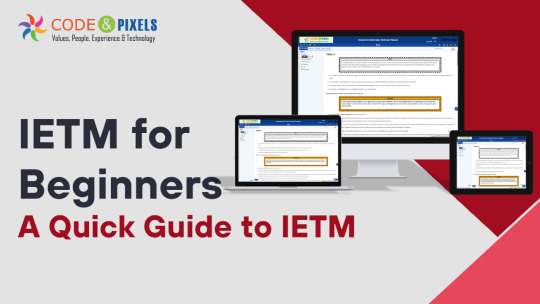
IETM: Interactive Electronic Technical Manual
Training Aids to Defence Client
If you are a supplier of defence then along with the system/equipment you also need to provide Training Aids
(CBT) — Computer-Based Training
Charts and Bloups
Video Film
Training Work Modules
Manuals Hard Copies
IETM
Evolution of Documentation in Defence
Before — Hardcopies and PDFs in DVDs (Upto 2015)
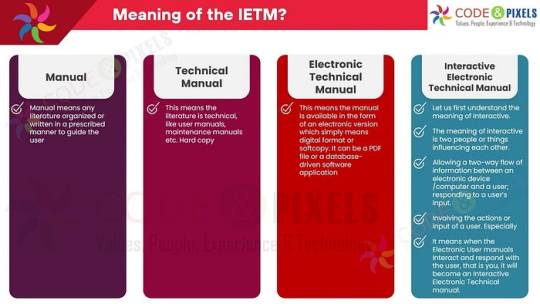
What is the meaning of the IETM?
Manual: Manual means any literature organized or written in a prescribed manner to guide the user.
TechnicalManual: This means the literature is technical, like user manuals, maintenance manuals etc. Hard copy
Electronic Technical Manual: This means the manual is available in the form of an electronic version which simply means digital format or softcopy. It can be a PDF file or a database-driven software application.
Interactive Electronic Technical Manual:
Let us first understand the meaning of Interactive. The meaning of interactive is two people or things influencing each other.
Allowing a two-way flow of information between an electronic device /computer and a user; responding to a user’s input.
Involving the actions or input of a user. Especially
It means when the Electronic User manuals Interact and respond with the user, that is you, it will become an Interactive Electronic Technical manual.
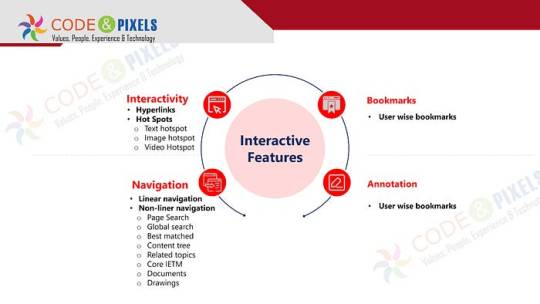
Interactive Features
Interactivity
Hyperlinks
Hot Spots
Text hotspot
Image hotspot
VideHotspot
Bookmarks
User wise bookmarks
Navigation
Linear navigation
Non-liner navigation
Page Search
Global search
Best matched
Content tree
Related topics
Core IETM
Documents
Drawings
Annotation
User wise bookmarks
The documents and pages are many hence, for easy and fast accessibility complete content is converted and stored as a database.
Whenever the user wants some information, IETM software produces the information in a fraction of a second.
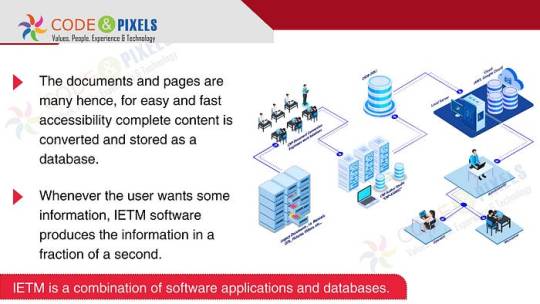
Use or Purpose of the IETM?
The purpose of the Manual is to give information related to the equipment to the end user for quick reference.
All the technicality is written in detail so that when an issue arises, the user can refer to the manual, as every time OEM or technical person or subject matter expert might not be available on the spot to resolve the issue.
If the manual has 10 pages users can refer easily.
But any system used by the defence will have multiple manuals and thousands of page counts and many times a user has to cross-refer between manuals, intra-manual and inter-manual to resolve the issue.
Referring to 10- 15 hard-copy or even soft-copy books simultaneously will be difficult and time-consuming.
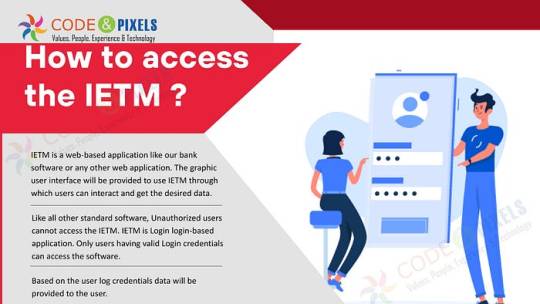
How to access the IETM ?
IETM is a web-based application like our bank software or any other web application. The graphic user interface will be provided to use IETM through which users can interact and get the desired data.
Like all other standard software, Unauthorized users cannot access the IETM. IETM is a Login - login-based application. Only users having valid Login credentials can access the software.
Based on the user log credentials data will be provided to the user.
IETM has 2 types of Users and one Administrator
Maintainer
Operator
If the operator logs in, the user gets all the content related to operator use, similarly if the maintainer logs in only maintenance-related content is visible for that user.
Ideally, all the content is available for both users, because the purpose of the IETM is to refer to the manual to fix the issue.
Administrators can create users who can see the user’s navigation and log-in history and interact with the users using user dashboards through Annotations.
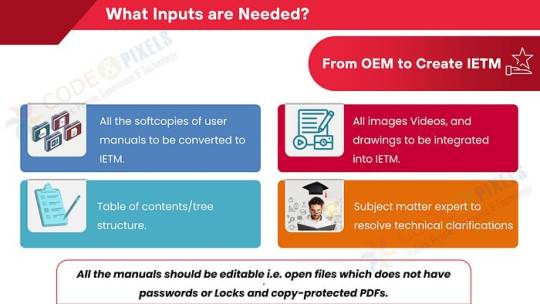
What Inputs are Needed? (From OEM to Create IETM)
All the softcopies of user manuals to be converted to IETM.
All images Videos, and drawings to be integrated into IETM.
Subject matter expert to resolve technical clarifications
Table of contents/tree structure.
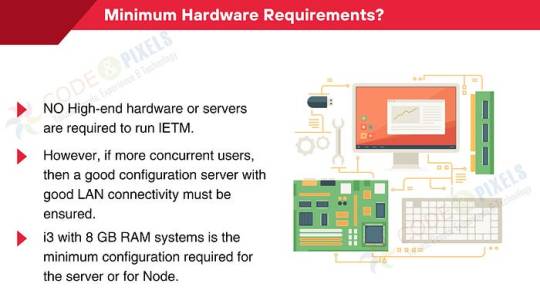
Minimum Hardware Requirements?
NO High-end hardware or servers are required to run IETM.
However, if more concurrent users, then a good configuration server with good LAN connectivity must be ensured.
i3 with 8 GB RAM systems is the minimum configuration required for the server or for Node.
Deliverables
BASED DB (Manuals are covered in the Database)
IETM VIEWER Software
User Manual and Installation Manual
Standards — compliance
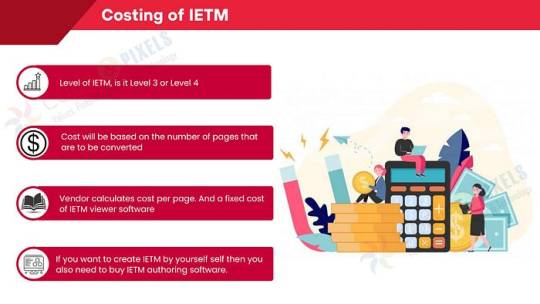
Costing of IETM: (Interactive Electronic Technical Manual)
Level of IETM, is it Level 3 or Level 4
Cost will be based on the number of pages that are to be converted
The vendor calculates the cost per page. And a fixed cost of IETM viewer software
If you want to create IETM by yourself self then you also need to buy IETM authoring software.
What are these Levels?
Level — 1 is any PDF file
Level — 2 is a PDF file with hyperlinks from the table of contents to the body etc.
Level — 3 is an HTML application. More hyperlinks, simple search, a content tree having log a screen with a hardcoded username and password and supplied in the format of EXE so that Windows can easily open
Level — 4 is Software plus Content/manuals converted as Database
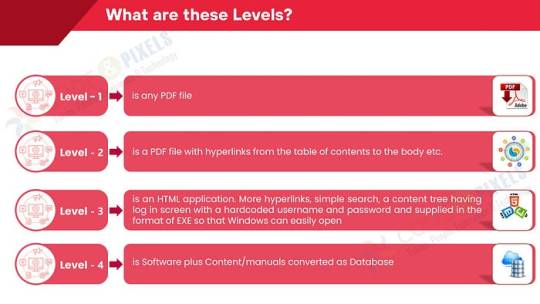
Regarding Level — 5, rest assured, till 2028 it will be Level — 4 only. As of now, there is nothing practically called Level — 5. Few are calling virtual reality and Augmented reality and Artificial intelligence Level — 5.
Pulling data from many user inputs and analyzing and giving results are done in Level — 5. IETM software cannot pull the data from various real-time points as No OEM will give the real-time information to third-party software directly. Yes, if the information is available offline, then that information can be imported into IETM and can be used as a reference.
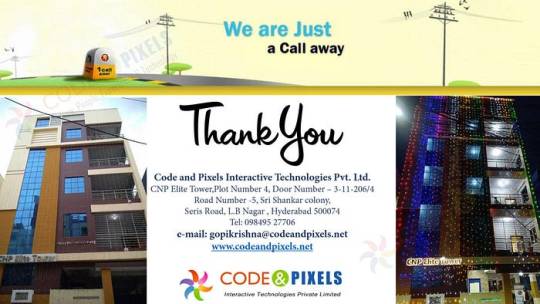
#ietm#software#technology#ietm developement#ietm code and pixels ietm hyderabad#ietm software#elearning#code and pixels#ietm level iv#codeandpixels#ietm level 4 software requirements#technical documentation#ietm document#ietm documentation#interactive electronic technical manual#Ietm Service Providers#Ietm Software Designers of India#Software Development Company#Elearning Solutions Company#E Learning Content Development Company#Online Education#Digital Education#Digital Content#Software Development Solutions#Elearning#Ietm Developers#Econtent Development#Elearning Solutions Providers#Econtent Developers#Econtent
3 notes
·
View notes
Text
Streamlining Safety and Efficiency: Virtual Inspection Services in the Modern World
In the ever-evolving landscape of public safety, the need for innovative solutions to enhance efficiency and streamline operations is paramount. This is where virtual inspection services come into play, transforming traditional safety procedures into modern, tech-savvy processes. Revcord is at the forefront of this revolution, offering cutting-edge solutions such as audio logging for public safety and NG911 Call Logging.
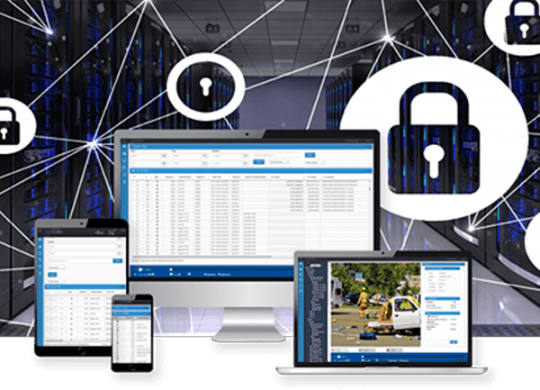
Audio Logging for Public Safety:
Audio logging for public safety is a critical component of public safety. It allows emergency services to record and archive emergency calls, ensuring a comprehensive database for future reference, training, and quality control. Revcord audio logging solutions provide secure, cloud-based storage, making it easy to access and manage critical audio data. This not only helps in verifying and improving response procedures but also aids in ensuring the highest standard of service during emergencies.
NG911 Call Logging:
The Next Generation 911 (NG911) is an advanced system that enables the public to make emergency calls via various communication methods, including text, multimedia messages, and voice calls. With NG911 Call Logging from Revcord, these interactions are seamlessly recorded and stored for later analysis. This invaluable data can help in assessing response times, improving protocols, and, most importantly, saving lives.
Virtual Inspection Services:
Virtual inspection services are changing the way safety inspections are conducted. By leveraging technology, public safety organizations can remotely assess and monitor facilities, ensuring compliance with safety regulations.
Relying on a cloud-based platform, Revcord virtual inspection services provide a secure and efficient way to perform inspections remotely. Features like real-time video streaming, image capture, and annotation tools make the process smooth and reliable.
In conclusion, Revcord is leading the charge in enhancing public safety with innovative solutions such as audio logging, NG911 Call Logging, and virtual inspection services. These tools not only increase efficiency but also contribute to the safety of communities across the modern world. Embracing these technologies is a crucial step in streamlining public safety operations and improving overall effectiveness.
2 notes
·
View notes
Text
Exploring the Potential of Python: A Voyage into Simplicity and Innovation
In the ever-evolving realm of technology, programming languages serve as the building blocks that bring ideas to life. Among these, Python stands out as a language that has captured the hearts of developers, educators, and businesses alike. With its elegant syntax, versatility, and expansive ecosystem, Python has become a driving force behind innovation across a multitude of industries.
The Python Prelude: A Language for All
The story of Python's creation unfolds in the late 1980s, authored by Guido van Rossum, a skilled Dutch programmer. Guido embarked on a mission to craft a programming language that placed a premium on code readability and user-friendliness. The outcome of his endeavor was Python, a language meticulously designed to strike a harmonious balance between simplicity and functionality. This guiding philosophy found its expression in "The Zen of Python," a collection of guiding aphorisms encapsulating the language's core tenets. At its heart, this philosophy champions readability, clarity, and the principle that, in the world of Python Courses, there should exist one—and preferably only one—obvious way to accomplish tasks.
Python Pandas – Loading Multiple files into DataFrame
youtube
Simplicity: The Masterstroke of Python
At the heart of Python's appeal lies its elegant and straightforward syntax. The language's design prioritizes human readability, allowing developers to express complex ideas with minimal syntactical noise. This simplicity is not merely a matter of aesthetics; it profoundly impacts how quickly one can learn and work with Python. Novices find Python approachable, and experienced programmers appreciate its efficiency, enabling them to focus on problem-solving rather than deciphering intricate code structures.
Python's distinctive indentation-based block structure serves as a catalyst for maintaining consistent formatting, resulting in code that is not only more readable but also highly organized. The requirement to adhere to a precise indentation pattern eliminates ambiguity and mandates code that is both visually pleasing and easy to comprehend. This characteristic not only fosters the adoption of sound coding practices but also significantly diminishes the likelihood of bugs arising from irregular formatting. It's a fundamental aspect you'll encounter when pursuing a Python Certification, emphasizing the language's commitment to code quality and clarity.
Python v/s C++ language – What is the Difference? – Pros and Cons.
youtube
Diversity in Application: From Web Development to Data Science
Python's versatility is a testament to its enduring relevance. The language boasts an extensive standard library and a vast ecosystem of third-party packages that cater to a wide array of domains. Whether you're building a web application, conducting data analysis, creating game engines, or delving into artificial intelligence, Python has the tools and frameworks to support your endeavor.
Within the realm of web development, Python shines with its formidable frameworks like Django and Flask. These frameworks are instrumental in accelerating the development of resilient and scalable web applications. By abstracting away many of the intricacies, they empower developers to channel their efforts into designing captivating user experiences and seamlessly integrating business logic. This is a crucial aspect you'll explore during your python training, where you'll harness the potential of these frameworks to streamline web development and bring your projects to life.
Python's influence in data science and analytics cannot be overstated. Libraries like NumPy, Pandas, and Matplotlib provide data scientists with tools to manipulate, analyze, and visualize data effectively. The Jupyter Notebook environment, which supports code, visualizations, and text annotations, has revolutionized data exploration and collaboration.
A Gateway to AI and Machine Learning
Python's meteoric rise in the realm of artificial intelligence and machine learning is no mere chance occurrence. Its innate simplicity, complemented by robust libraries like TensorFlow and PyTorch, has democratized the landscape of AI development. This means that developers can delve into the intricacies of complex neural networks and cutting-edge algorithms without being entangled in convoluted syntax. This pivotal facet is a focal point in python developer training, where individuals harness the language's prowess to embark on transformative journeys in AI and machine learning development.
From image recognition to natural language processing, Python's libraries have fueled the creation of remarkable AI applications. The open-source nature of these libraries promotes collaboration and knowledge-sharing, enabling a global community to collectively push the boundaries of what AI can achieve.
Python vs Java – What is the Difference – Pros & Cons
youtube
The Python Community: A Supportive Ecosystem
The success of Python goes beyond its language features; it is also rooted in its vibrant community. The Python Software Foundation (PSF) supports the language's growth and fosters a sense of collaboration. Online forums, tutorials, and user groups provide ample opportunities for developers to seek help, share insights, and stay updated on the latest developments.
Python's steadfast commitment to open-source principles has cultivated a thriving ecosystem of community-contributed packages that cater to a wide spectrum of requirements. Whether your endeavors involve data visualization, cryptography, web scraping, or even venturing into the realm of robotics, you'll likely discover that Python boasts a rich repository of packages, each designed to facilitate and enhance your projects. Exploring this expansive ecosystem is a key component of embarking on the best python course, ensuring you have the tools and knowledge to tackle diverse challenges.
The Future: Python's Ongoing Evolution
As we gaze into the future, Python's trajectory remains promising. Its simplicity and adaptability make it well-suited to embrace emerging technologies such as quantum computing and IoT. Python's role in education also holds significance, as its beginner-friendly nature continues to introduce programming to new generations of learners.
END NOTE:
Python transcends the realm of mere programming languages; it embodies simplicity, fosters innovation, and thrives on community collaboration. Its influence extends across industries and geographical boundaries, providing developers with the means to transform ideas into tangible solutions with grace and efficiency.
Whether you're a seasoned coder or an inquisitive novice, Python extends a warm invitation to embark on a voyage of creativity and exploration. In a world continually reshaped by technology, Python stands as an unwavering beacon, illuminating the trail to innovation. This philosophy is at the core of every reputable python training institute, guiding learners toward excellence in Python development.
1 note
·
View note
Text
Cloud Based Radiology PACS: Revolutionizing Imaging with Nandico
In the era of digital healthcare, medical imaging plays a vital role in accurate diagnosis, timely treatment, and collaborative patient care. As imaging volumes grow and the demand for real-time access increases, traditional on-site storage systems are proving inefficient. Enter cloud based radiology PACS—a modern, scalable, and cost-effective solution. With leading providers like Nandico, healthcare institutions can now embrace cutting-edge cloud technologies to streamline workflows, reduce operational costs, and provide faster, more efficient care.
What is Cloud Based Radiology PACS?
Cloud based radiology PACS (Picture Archiving and Communication System) is a medical imaging system that stores and delivers radiological images via cloud infrastructure rather than on physical servers within a hospital or diagnostic center. This technology enables physicians, radiologists, and healthcare professionals to access diagnostic images anytime, anywhere, through secure internet connections.
Unlike traditional PACS systems that require significant hardware investment and IT maintenance, cloud based radiology PACS uses off-site servers managed by trusted service providers like Nandico. It ensures quick retrieval, seamless sharing, and long-term storage of medical images with minimal capital investment.
Why Cloud Based Radiology PACS Is the Future
As medical facilities expand and adapt to patient-centric care models, the need for high-speed, reliable, and scalable imaging systems grows. Cloud based solutions offer unmatched flexibility and efficiency in handling large volumes of data.
Key Advantages:
Remote Accessibility: Physicians can access images and reports from any location, improving diagnosis speed and supporting telehealth workflows.
Scalability: Cloud storage adapts to your data needs, allowing for expansion without new hardware purchases.
Cost Savings: Eliminates the need for physical servers, reducing both initial investment and ongoing maintenance costs.
Disaster Recovery: With automatic backups and redundancy, cloud based PACS ensures your data remains safe and accessible even during system failures.
Collaboration Made Easy: Enables multi-specialist viewing and faster consultations across departments and institutions.
Nandico: Leading the Way in Cloud Based Radiology PACS
Nandico is at the forefront of digital radiology innovation. With its robust, secure, and intuitive cloud based radiology PACS, Nandico empowers healthcare providers to deliver faster, smarter, and more connected patient care. Whether you're a single diagnostic center, a multi-specialty hospital, or a teleradiology network, Nandico’s platform adapts to your specific needs.
Top Features of Nandico’s Cloud Based Radiology PACS
1. AI-Optimized Image Management
Nandico’s platform is built with advanced indexing and intelligent search, enabling rapid access to patient studies and historical records.
2. Universal Accessibility
Radiologists can log in securely from anywhere—whether in a hospital, home office, or remote location. This flexibility supports 24/7 diagnostic services.
3. High-Speed DICOM Viewer
Integrated with a web-based DICOM viewer, Nandico enables users to view, annotate, and compare high-resolution images on any device without needing extra software.
4. Seamless Integration
Nandico’s PACS easily integrates with existing systems such as RIS, HIS, and EHR—eliminating data silos and creating a unified workflow.
5. End-to-End Security
Compliant with HIPAA, GDPR, and other regulatory standards, Nandico ensures that patient data is encrypted, monitored, and securely stored in the cloud.
Use Cases of Nandico Cloud Based Radiology PACS
1. Teleradiology Networks
Radiologists operating remotely can receive and interpret images instantly, reducing turnaround time and expanding diagnostic coverage in underserved areas.
2. Multi-location Hospitals
Centralized cloud storage allows seamless sharing of images between different branches, enabling coordinated care across large hospital networks.
3. Diagnostic Imaging Centers
Private labs can manage high imaging volumes without investing in expensive local infrastructure, while offering faster reporting to clients.
4. Emergency and Mobile Imaging Units
With immediate upload and access to cloud-based systems, emergency responders and mobile radiology teams can provide real-time diagnostics.
How Cloud Based Radiology PACS Benefits Patients
A cloud based radiology PACS system like Nandico’s doesn’t just enhance clinical workflows—it significantly improves patient care:
Faster Diagnoses: Reduced image retrieval time leads to quicker report generation and faster treatment decisions.
Improved Accuracy: With access to previous records and high-quality viewers, radiologists can make more informed interpretations.
Better Access to Specialists: Cloud access allows collaboration with subspecialty radiologists, even across different regions or countries.
Enhanced Communication: Physicians and patients benefit from timely report sharing and improved transparency.
Cost Comparison: Cloud vs Traditional PACS
FeatureCloud Based PACS (Nandico)Traditional On-Premises PACSSetup TimeRapid (Few hours to days)Lengthy (Weeks to months)Capital InvestmentLowHigh (Servers, Storage, Setup)MaintenanceIncluded in subscriptionRequires dedicated IT teamScalabilityInstant cloud upgradesLimited by hardwareAccessibilityAnywhere, anytimeOn-site or VPN required
Security and Compliance with Nandico
Security is critical in healthcare IT. Nandico’s cloud based radiology PACS uses:
End-to-End Encryption (in transit & at rest)
Role-Based Access Control
Regular Data Backups
Real-Time Activity Monitoring
Global Data Compliance (HIPAA, GDPR, ISO standards)
With Nandico, your data is not only accessible and fast—it’s protected.
The Future of Radiology is in the Cloud
The medical imaging industry is rapidly moving toward cloud-first strategies. As AI, 5G, and telemedicine evolve, cloud based systems will be essential to meet the growing demand for real-time diagnostics, remote collaboration, and scalable infrastructure.
Nandico is actively integrating future-ready features like AI-assisted anomaly detection, automated report generation, and intelligent workflow routing—ensuring that your radiology practice remains ahead of the curve.
Conclusion
Cloud based radiology PACS is more than just a digital storage system—it’s a gateway to faster, smarter, and more collaborative healthcare. By adopting Nandico’s cloud-powered platform, healthcare institutions can reduce costs, improve diagnostic speed, enhance security, and scale operations effortlessly.
0 notes
Text
Why Quality Shop Drawings Are Essential for Successful Construction and Fabrication Projects
The Importance of Sheet Metal Fabrication Drawings
Sheet metal is a widely used material in HVAC systems, industrial enclosures, ductwork, and architectural elements. However, working with sheet metal requires precision to ensure every component is cut, bent, and assembled to exact specifications.
Sheet metal fabrication drawings serve as the blueprint for this process. They provide:
Flat pattern layouts that guide CNC machines or manual operations.
Bend lines, hole locations, and tolerances to ensure parts fit together perfectly.
Material specifications and finish details for compliance and performance.
our team specializes in creating fabrication-ready drawings that reduce waste, optimize material usage, and streamline production workflows. By combining advanced CAD software with deep manufacturing knowledge, we ensure each drawing meets your shop's exact standards.
Construction Coordination Drawings: The Key to Conflict-Free Building
In multi-discipline construction projects, lack of coordination between trades often leads to on-site clashes, delays, or costly rework. This is where construction coordination drawings become invaluable.
Also known as coordination or composite drawings, these documents overlay architectural, structural, and MEP elements into a single, conflict-free visual representation. They ensure:
No spatial conflicts between systems like ductwork, piping, electrical conduits, and structural elements.
Clear communication between trades to avoid assumptions or misinterpretations.
Accurate installation sequencing to prevent backtracking or rework.
we use a combination of BIM software and clash detection tools to create detailed coordination drawings that help contractors build with confidence. Our approach reduces on-site uncertainty and leads to smoother, more predictable construction phases.
Mechanical Shop Drawings That Bring Designs to Life
Mechanical shop drawings provide the bridge between engineering design and physical construction. These detailed documents break down mechanical systems—such as HVAC, piping, and equipment layouts—into precise, constructible elements.
What makes high-quality mechanical shop drawings essential?
They show exact dimensions, locations, and specifications for installation.
They clarify manufacturer details, connection types, and support systems.
They include isometric views, section cuts, and annotations to aid field teams.
Whether you’re a mechanical contractor, engineer, or fabrication partner, having reliable shop drawings is critical for installation accuracy, cost control, and project coordination.
works closely with MEP contractors and consultants to deliver mechanical shop drawings that meet project specifications, building codes, and industry standards. Our team ensures every detail is captured—so there's no guesswork in the field.
Why Work with ours?
Choosing means partnering with a team that understands the real-world demands of construction and fabrication. We bring technical accuracy, fast turnaround times, and a collaborative approach to every project.
Our drawing services offer:
Industry-compliant documentation tailored for shop floor and job site use
Seamless integration with BIM and CAD platforms
Expert knowledge across HVAC, sheet metal, piping, and structural systems
Clash-free coordination to support smooth installation
Responsive support and revision handling
We don’t just deliver drawings—we deliver trust, precision, and peace of mind.
Applications Across Industries
Our sheet metal fabrication drawings, construction coordination drawings, and mechanical shop drawings serve a wide range of industries and project types, including:
Commercial HVAC systems
Industrial manufacturing plants
Data centers and cleanrooms
Healthcare and institutional buildings
Multi-family and high-rise construction
No matter the size or complexity of your project, has the experience and tools to support your goals.
0 notes
Text
AI Boom Boosts Demand for Domain-Specific Datasets in Finance, Retail, and Healthcare

Market Overview
The AI training dataset market is rapidly evolving as artificial intelligence (AI) technologies continue to transform industries across the globe. These datasets—critical for teaching algorithms to interpret, analyze, and act on data—are becoming the cornerstone of AI development. Whether in self-driving cars or chatbots, AI models are only as good as the data they are trained on. This dependency on quality and diverse datasets is pushing demand across sectors such as automotive, healthcare, BFSI, and more.
In a world increasingly driven by automation and smart technology, the AI training dataset market is playing a pivotal role by providing the foundational data necessary for machine learning models. As organizations race toward digital transformation, the importance of accurate, labeled, and high-volume data cannot be overstated.
Click to Request a Sample of this Report for Additional Market Insights: https://www.globalinsightservices.com/request-sample/?id=GIS24749
Market Size, Share & Demand Analysis
The AI training dataset market is experiencing robust growth and is expected to witness significant expansion by 2034. From data types like text, image, video, and audio to specialized sensor and time series data, demand is booming. Various learning types—including supervised, unsupervised, reinforcement, and semi-supervised learning—require tailor-made datasets to enhance training performance.
Additionally, with advancements in speech recognition, robotics, machine translation, and computer vision, demand for diverse datasets is escalating. The need for labeled and annotated data is especially high in applications like healthcare diagnostics, fraud detection, virtual assistants, and autonomous vehicles.
Companies are now heavily investing in high-quality data for model training, which is contributing to the growing market share of data services such as annotation, cleaning, augmentation, and integration. This surge in demand reflects the rising need for training datasets that align with real-world applications and business goals.
Market Dynamics
Several factors are driving the AI training dataset market, including the rising adoption of AI across enterprises and the increased complexity of AI models. As machine learning algorithms become more intricate, the volume and quality of required training data increase substantially.
On the supply side, the emergence of automated data labeling tools, open-source data platforms, and crowd-sourced annotation services are streamlining data preparation.
However, challenges such as data privacy, lack of standardization, and high costs associated with data acquisition and labeling still pose hurdles. Despite this, the market continues to thrive thanks to technological innovations and growing AI integration in sectors like healthcare, retail, telecommunications, and manufacturing.
Key Players Analysis
Key companies driving the AI training dataset market include Figure Eight (Appen), Scale AI, Lionbridge AI, Amazon Web Services, Google, and Microsoft. These players offer turnkey and custom solutions to cater to enterprise-specific needs.
Their offerings cover everything from data collection and preprocessing to validation and deployment. Additionally, major players are investing in AI-focused subsidiaries and platforms that provide end-to-end data services, which strengthens their market position and improves customer retention.
These companies are also working on automating annotation processes and offering hybrid deployment options—both cloud-based and on-premises—to meet varying business needs.
Regional Analysis
North America currently dominates the AI training dataset market, primarily due to its advanced technological infrastructure and early adoption of AI in sectors like automotive and finance. The U.S. holds a major market share, with tech giants and startups contributing heavily to innovation in this space.
Europe follows, with strong growth fueled by its emphasis on ethical AI, data privacy regulations, and smart city projects. Meanwhile, the Asia-Pacific region is emerging as a promising market due to increasing digitization in countries like China, India, and Japan, supported by government initiatives and growing investments in AI R&D.
Recent News & Developments
Recent years have seen several strategic developments in the AI training dataset market. Appen launched a new data annotation platform with integrated machine learning support, while Scale AI raised significant funding to enhance its data labeling infrastructure.
Google and Microsoft have also expanded their cloud-based dataset services to support industry-specific use cases. Moreover, the integration of synthetic data generation is gaining traction, as companies look for cost-effective ways to scale model training while preserving privacy.
Browse Full Report @ https://www.globalinsightservices.com/reports/ai-training-dataset-market/
Scope of the Report
The AI training dataset market is vast and expanding, covering diverse components like data security, analytics, storage, and management. With deployment models ranging from cloud and on-premises to hybrid solutions, companies have more flexibility than ever before.
From turnkey to custom and open-source solutions, the scope of services is continuously broadening. The application of AI training datasets spans predictive maintenance, personalized marketing, and beyond, making it a critical enabler of digital transformation across industries.
As innovation continues and AI permeates deeper into business processes, the AI training dataset market is expected to play a foundational role in the future of intelligent technologies.
Discover Additional Market Insights from Global Insight Services:
Supply Chain Security Market: https://www.openpr.com/news/4089723/supply-chain-security-market-is-anticipated-to-expand-from-4-8
Edutainment Market: https://www.openpr.com/news/4089586/edutainment-market-to-hit-16-9-billion-by-2034-growing-at-12-6
Magnetic Sensor Market: https://www.openpr.com/news/4090470/magnetic-sensor-market-set-to-reach-12-48-billion-by-2034
AI Agent Market: https://www.openpr.com/news/4091894/ai-agent-market-to-surge-past-32-5-billion-by-2034-fueled
Anime Market: https://www.openpr.com/news/4094049/anime-market-is-anticipated-to-expand-from-28-6-billion-in-2024
#breaking news#research#services#trending news#usa news#100 days of productivity#news#business#growth
0 notes
Text
Scale AI Pricing Analysis: When Premium Costs Don't Match Your Project Needs
The data annotation industry often suffers from a one-size-fits-all mentality, where premium platforms like Scale AI position themselves as universal solutions. However, Scale AI pricing reflects enterprise-level capabilities that may be excessive for many projects. Understanding when premium costs are justified—and when they're not—is crucial for optimizing annotation investments.
With annual costs averaging $93,000 and enterprise projects reaching $400,000+, Scale AI represents a significant investment that demands careful evaluation. The platform's strengths lie in complex, large-scale projects requiring specialized expertise, but these capabilities come with premium pricing that may not provide proportional value for simpler annotation needs.
Understanding Scale AI's Premium Positioning
Scale AI has built its reputation on handling complex annotation projects for autonomous vehicles, advanced computer vision systems, and large-language model training. Their platform combines human expertise with AI-assisted tools to deliver high-precision annotations at scale. This positioning justifies premium pricing for projects that require these specific capabilities.
However, the platform's enterprise focus means that even straightforward annotation tasks often carry premium price tags. This creates a mismatch between project requirements and cost efficiency, particularly for organizations with basic annotation needs or limited budgets.
Project-Cost Alignment Analysis
Effective annotation platform selection requires matching project complexity with appropriate pricing tiers. Scale AI's premium pricing makes sense for projects involving complex workflows, specialized domain expertise, or massive data volumes requiring sophisticated management systems.
For projects involving standard image classification, basic bounding box annotations, or text labeling, premium pricing may represent poor value proposition. These tasks can often be completed effectively using mid-tier platforms that offer transparent pricing and efficient workflows without enterprise-level overhead.
Consider project characteristics like data volume, annotation complexity, quality requirements, timeline constraints, and available budget. Projects requiring specialized expertise or complex workflows may justify premium pricing, while straightforward tasks benefit from cost-effective alternatives.
Right-Sizing Your Annotation Investment
Smart businesses recognize that the most expensive platform isn't always the best choice. Effective annotation strategy involves selecting platforms that match project requirements while optimizing cost efficiency. This approach ensures resources are allocated effectively without compromising quality or timelines.
Mid-tier platforms often provide excellent value for standard annotation projects. These services typically offer transparent pricing, efficient workflows, and quality standards that meet most project requirements without premium costs.
For businesses with ongoing annotation needs, subscription-based platforms can provide predictable costs and scalable services. These models allow organizations to budget effectively while accessing professional annotation tools and managed services.
Alternative Evaluation Framework
When evaluating annotation platforms, consider factors beyond price alone. Quality standards, turnaround times, scalability, integration capabilities, and customer support all contribute to overall value proposition. The goal is to find platforms that deliver required capabilities at appropriate price points.
Platforms offering transparent pricing typically provide better value visibility, enabling objective comparison across different services. This transparency facilitates informed decision-making and helps avoid unexpected costs during project execution.
For detailed comparisons of platforms across different complexity levels and price points, explore comprehensive platform analyses that examine real-world performance and value propositions.
Conclusion
Scale AI pricing reflects premium positioning that may not align with all project needs. While the platform excels at complex, large-scale enterprise projects, many businesses achieve better ROI with alternatives that match specific requirements and budget constraints.
Effective annotation strategy involves right-sizing platform selection based on actual project needs rather than defaulting to premium options. By matching capabilities with requirements, businesses can optimize annotation investments while maintaining quality standards and project timelines.
#artificialintelligence#machinelearning#aitools#datascience#dataannotation#ai tools#image annotation#aiapplications#datalabeling#aitrainingdata#annotations#aiinnovation
0 notes
Text
IETM for beginners A Quick Guide to IETM
The main objective of this page is to give a quick insight into IETM. You may have many assumptions related to IETM. We tried to cover all the aspects related to IETM.
Interactive Electronic Technical Manual, in short, is called IETM. If you are a supplier of defence then along with the system/equipment you also need to provide training aids like CBT, Charts and blowup diagrams, Video films, Training work Modules, and a few sets of Hard copies of the manuals and IETM.
Till 2015, mainly Hardcopies and PDFs in DVDs used to be in deliverables. From 2015 onwards IETM is used in RFQ/SOTR/SCOPE as a deliverable.
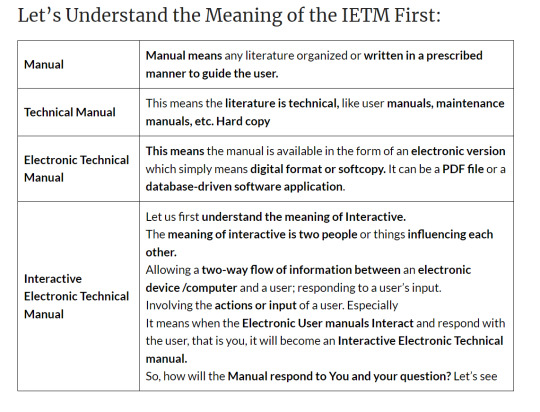
As per the above definitions, it is clear that we need a Technical Manual that too in soft copy and which will be able to talk to us or able to respond to us.
When the Manual responds to user questions then it is called an Interactive Electronic Technical Manual.
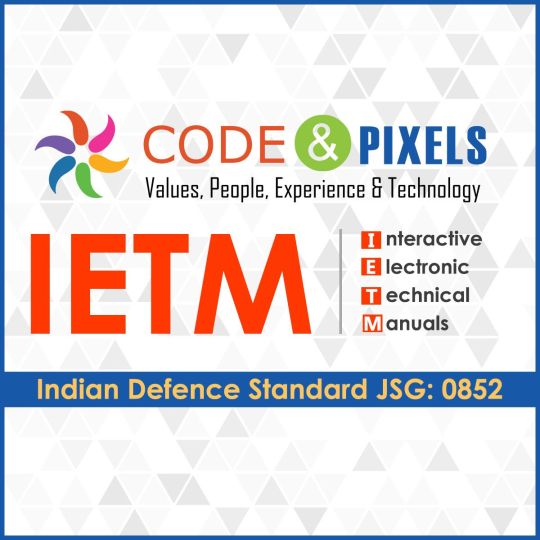
How will the document be able to respond? We need to embed or integrate this soft copy or content into one application so that the application will respond or interact. What are the common interactivity features so that the User will be able to get the information from the software?
Interactive Features Will Be Like:
Navigation
Linear navigation (moving in the fixed or pre-defined path..e next – previous topics
Non-liner navigation ( it means the user can go to any topic randomly)
Page Search
Global Search
Best Matched
Content Tree
Related Topics
Core IETM
Documents
Drawings
Interactivity
Hyperlinks
Hot Spots
Text Hotspot
Image Hotspot
Video Hotspot
Bookmarks
Annotation
The documents and pages are many hence, for easy and fast accessibility complete content is converted and stored as a database. Whenever the user wants some information, IETM software produces the information in a fraction of a second.
IETM is a combination of software applications and databases.
What is the Use or Purpose of the IETM?
Any manual’s purpose is to give information related to the equipment to the end user for quick reference.
All the technicality is written in detail so that when an issue arises, the user can refer to the manual, as every time OEM or technical person or subject matter expert might not be available on the spot to resolve the issue.
If the manual has 10 pages users can refer easily. But any system used by the defence will have multiple manuals and thousands of page counts and many times a user has to cross-refer between manuals, intra-manual and inter-manual to resolve the issue.
Referring to 10- 15 hard-copy or even soft-copy books simultaneously will be difficult and time-consuming. Using IETM software, users can solve in a single click and seconds.
How to Access the IETM
IETM is a web-based application like our bank software or any other web application. The graphic user interface will be provided to use IETM through which users can interact and get the desired data.
Like all other standard software, Unauthorized users cannot access the IETM. IETM is Login login-based application. Only users having valid Login credentials can access the software.
Based on the user log credentials data will be provided to the user. IETM has 2 types of users and one Administrator.
Maintainer
Operator
If the operator logs in, the user gets all the content related to operator use, similarly if the maintainer logs in only maintenance-related content is visible for that user.
Ideally, all the content is available for both users, because the purpose of the IETM is to refer to the manual to fix the issue.
Administrators can create users who can see the user’s navigation and log-in history and interact with the users using user dashboards through Annotations.
In any case, Only OEM has the right to update or modify the content. Users can only refer to the content.
What inputs are needed from OEM to create IETM:
All the softcopies of user manuals to be converted to IETM.
All images Videos, and drawings to be integrated into IETM.
Table of contents/tree structure.
Subject matter expert to resolve technical clarifications.
All the manuals should be editable i.e. open files which do not have passwords or Locks and copy-protected PDFs.
Minimum Hardware Requirements for optimal performance of IETM
NO High-end hardware or servers are required to run IETM. However, if more concurrent users then a good configuration server with good LAN connectivity must be ensured.
i3 with 8 GB RAM systems is the minimum configuration required for the server or for Node.
Deliverables
BASED DB (Manuals are covered in the Database)
IETM VIEWER Software
User Manual and Installation Manual
Standards Compliance
The IETM framework complies with Indian Defence standards, JSG 0852
What is IETM and What is Not IETM?
IETM Vs 3D Blowups
There is a misconception about IETM. As the name indicates interactive, people assume that it is a 3D based on blowup software. Interactive means, users can browse or cross-refer or interact with the software to search on a particular topic/sub-topic.
3D Animations and blowups can be taken as separate tasks based on the complexity of the system and the level of blowups that you want. We have a separate division to take up such assignments.
If your SCOPE /SOTR /RFP says IETM then stick to IETM only.
These 3D animations, 3d Blowups, and virtual reality cost more than IETM cost. They will be good to see definitely but they are not part of IETM. If your client wants 3d and if the scope specifically mentions 3d then it is a separate deliverable but not IETM.
There is no link between IETM and 3d. If you have 3D animations or blowups, you can integrate into IETM.
Understand the difference between IETM VS CBT VS Virtual reality.
Another important point to check is which IETM level the client/ SCOPE is asking for. Generally, they may ask for Level 3 or Level 4. (If your RFQ is 5 years old around 2016-17 then they may ask for Level 2 or 3)
Level -3 costs less price than Level -4. If you have a choice to select, then select IETM -3 as it is very economical.
The latest RFPs / SCOPE asks for Level -4 only.
Costing of IETM
Level of IETM, is it Level 3 or Level 4
Cost will be based on the number of pages that are to be converted.
The vendor calculates the cost per page.
And a fixed cost of IETM viewer software.
If you want to create IETM by yourself self then you also need to buy IETM authoring software.
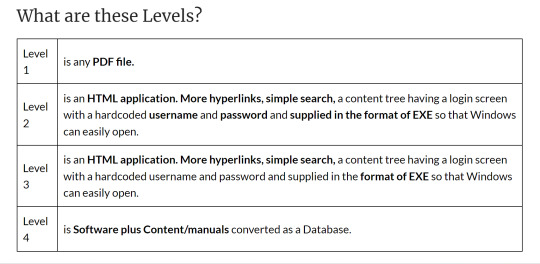
Regarding Level -5, rest assured, till 2028 it will be Level 4 only. As of now, there is nothing practically called Level -5. Few are calling virtual reality and Augmented reality and Artificial intelligence Level 5.
Pulling data from many user inputs and analyzing and giving results are done in Level -5.
IETM software can not pull the data from various real-time points as No OEM will give the real-time information to third-party software directly. Yes, if the information is available offline, then that information can be imported into IETM and can be used as a reference.
Implementing VR/AR and Artificial Intelligence itself costs 10 times more than the actual equipment cost. Hence for the next few years, AR/VR and artificial intelligence are affordable.

Want to see the IETM software?
Until you see the software, you will not be able to understand it fully. Hence, we strongly recommend you have a virtual meeting for 15 minutes so that you will have a fair idea about the IETM software.
Write an email to [email protected] or call 9849527706 to fix up the quick demo on IETM.
Our Expertise:
Code and Pixels Interactive Technologies Private Limited (CNP) is an IETM service provider based in Hyderabad (India). We provide end-to-end Software development and IETMs (INDIAN STANDARD IETM JSG 0852, LEVELS 3 and 4 )
Code and Pixels is the only Company, that delivered 50 plus IETMs (Class 3, Class 4) to Indian defence and many corporates i.e. Tata, L&T, Nova, Ashok Layland, Mahendra Defence, BAeHAL, Marine Electricals, Idea Forge, Raphe mPHibr, Navcon, Zen technologies, Kirloske, Avision, Alterra, Jyoti Ltd, Data patterns, DESMI, Man Energy and Defense labs and production agencies and shipyards such as DRDL, RCI, ASL, BDL, ECIL, BEL, HSL, and many OEMs.
We have worked in association with the Naval Technical Group of the Navy and also with the eMMS team of the Indian Air Force and MAG (DRDL) of the Indian Army. Having vast experience, we assure you that we will be your trusted technology partner in delivering IETMs.

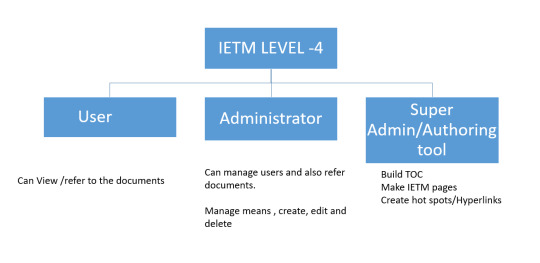
#ietm#ietm code and pixels ietm hyderabad#software#technology#code and pixels#ietm developement#ietm level iv#ietm software#elearning#codeandpixels
2 notes
·
View notes